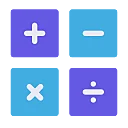PrepApti - Quants Menu
- Home
- Allegations and Mixtures
- AP GP HP
- Arithmetic Progressions
- Averages
- Boats and Streams
- Geometric Progressions
- Harmonic Progressions
- Clocks
- Calendar
- Clocks and Calendars
- Compound Interest
- Simple Interest
- Simple Interest and Compound Interest
- Linear Equations
- Quadratic Equations
- Co-ordinate geometry
- Perimeter Area Volume
- Divisibility
- HCF and LCM
- HCF
- LCM
- Number System
- Percentages
- Permutations Combinations
- Combinations
- Piipes and Cisterns
- Probability
- Work and Time
- Succesive Discounts
- Heights and Distance
- Decimals and Fractions
- Logarithm
- Venn Diagrams
- Geometry
- Set Theory
- Problem on Ages
- Inverse
- Surds and Indices
- Profit and Loss
- Speed, Time and Distance
- Algebra
- Ratio & Proportion
- Number, Decimals and Fractions
How To Solve Successive Discounts Questions Quickly
How to Solve Successive Discounts Questions Quickly in Aptitude
Here, In this Page you will Learn How to Solve Successive Discount Questions Quickly.
- Successive Discount is the Reduction in Price of a Goods or Service .
- Successive Discount is the Discount which is applied on other discount .
In our Real life Successive Discount is also used to buy any Product or Services.That’s why This is Very Important for us to know this concept.

How to Solve Successive Discount Questions Quickly
- Successive discount is discount on discount.
Case 1: If there are two discounts.
Case 2: If there are three discounts. - Marked price is the price marked on the product. It is the same price on which you get discounts.
Example: The marked price of a shirt is Rs.1000. A shopkeeper offers 10% discount on this shirt. How much will you have to pay, finally?
Solution : Discount =10% of 1000 = \frac{10}{100} × 1000 =Rs 100
Selling Price = 1000 – 100 = Rs 900
- But in exam,you can do it directly in your head.So just think that 10 percent discount means you’ve to pay 100 percent minus 10 percent=90 percent of the marked price which means, ( \frac{90}{100}) 1000 =Rs. 900
Type 1: If there are two discounts (1st discount is x% and 2nd discount is y%)
Question 1. The successive discount of 30% and 40% is given on holiday package. If the price of the package is 10000. What is final price of the package?
Options
A. 2100
B. 4200
C. 2400
D. 5800
Solution: Total discount = x + y – \frac{xy}{100}
Total discount = 30 + 40 – \frac{30 × 40}{100}
Total discount = 58%
Discount = 58% of 10000
Discount = 5800
S.P = M.P – Discount
S.P = 10000 – 5800
S.P = 4200
Correct option: B
Question 2. A shopkeeper is selling a phone at 15000 Rs but he is offering two schemes
Scheme A: Buy it at one time discount of 30%
Scheme B: Buy it at two successive discounts of 15% and 15%
Help the customer to find the best scheme.
Options
A. Scheme A
B. Scheme B
C. Both are equal
D. None of the above
Solution: Scheme A offers Discount of = 30%
It means 0.70 x original price
Scheme B offers Discount of = 15% and 15%
It means 0.85 x 0.85 x original price = 0.7225 x original price
Therefore, Scheme A is the best scheme.
Correct option: A
Type 2: If there are three discounts (1st discount is x%, 2nd discount is y% and 3rd discount z%)
Question 1. In a shop a dress was on a discount. The discount on the printed price of the dress are 20% and 12% and 5 % respectively, what is the total percentage of actual discount given on the dress?
Options
A. 33.12%
B. 33.5%
C. 21.3%
D. 33%
Solution: Total discount = x + y – \frac{xy}{100}
First, calculate for first 2 discounts = 20 + 12 – \frac{20 × 12}{100} = 29.6%
Now discount D = 29.6% and Z = 5 %
Total discount = D + Z – \frac{DZ}{100}
Total discount = [29.6 + 5 – \frac{29.6 ×5}{100}] %
Total discount = 33.12%
Therefore total discount is 33.12%
Correct option: A
Question 2. In a shop a dress was on a discounts. The discount on the printed price of the dress are 5% and 10% and 15 % respectively. The marked price of the dress is 1500. Then calculate overall discount and selling price of the dress?
Options
A. 1000.125
B. 1900.125
C. 1910.125
D. 1090.125
Solution: Total discount = x + y – \frac{xy}{100}
First, calculate for first 2 discounts = 5 + 10 – \frac{5 × 10}{100} = 14.5%
Now discount D = 14.5% and Z = 15 %
Total discount = D + Z – \frac{DZ}{100}
Total discount = [14.5+ 15 – \frac{14.5 × 15}{100}] %
Total discount = 27.32%
Discount = 27.32% of 1500 = 409.875
Selling price = 1500 – 409.875 = 1090.125
Correct option: D
Question 3. A man gave his property at three successive discounts of 20%, 10% and 10%. If the price of a property was Rs. 500000 and sales tax on it is 15% of its sale price, then how much a buyer will have to pay for it?
Options
A. 327600
B. 376200
C. 372600
D. 372060
Solution: Selling price = price – discounts
Selling price = 500000 x (1- \frac{20}{100}) x (1- \frac{10}{100}) x (1- \frac{10}{100})
Selling price = 324000
Rate of sales tax = 15%
Price to be paid by buyer = Selling price + tax
Price to be paid by buyer = 324000 + 15% of 324000
Price to be paid by buyer = 324000 + 48600
Price to be paid by buyer = 372600
Correct option: C
Read Also – Formulas to solve successive Discount questions

 Apply For Jobs
Apply For Jobs Get Hiring Updates
Get Hiring Updates

Login/Signup to comment